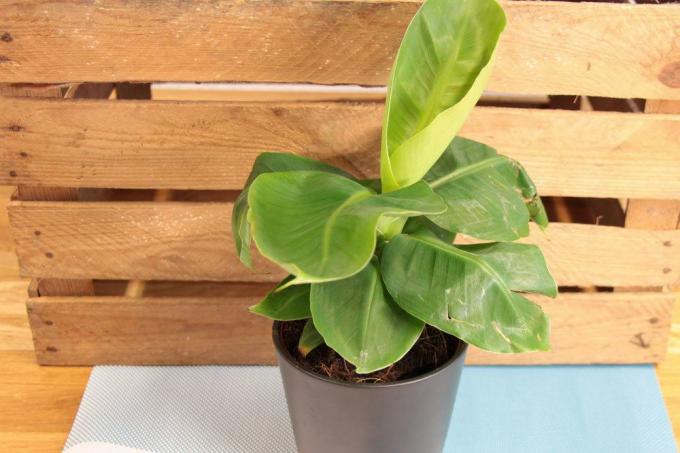
table of contents
- Hardy exotic species
- Succulents
- Cacti
- Calla
- Bananas
- Palm trees
- Carnivores
It sounds tempting to cultivate exotic species in the garden all year round. The plants spread a tropical atmosphere even with ice and snow, which brightens the mood on gray and cloudy days. There are some perennial plants that are considered hardy and can spend the winter outdoors. Depending on the needs, attention should still be paid to winter protection, because this increases the likelihood of survival. In winter, it's not just icy temperatures that cause stress.
Hardy exotic species
The winter hardiness of a plant describes its robustness against prolonged frost. Up to certain air temperatures, some exotic species are able to survive in frosty climates. If winter protection is nevertheless recommended, it should protect against other environmental influences during the cold season. Wind load, hoar frost or strong temperature fluctuations can endanger the above-ground parts of the plant, while waterlogging or drought affect the root system. Plants that are sensitive to the cold can also be planted in frostier regions if the microclimate is adjusted accordingly. The chance of survival of such plants is significantly increased if they are protected from the cold east and north winds. Hedges and house walls increase the temperature at the site considerably.
Suitable winter protection
Above-ground parts of plants are more endangered than the root system, because they are exposed to the icy winds unprotected. Evergreen plants also evaporate water in winter and therefore need protection so that the soil does not freeze over and the roots can steadily absorb water. A thick layer of brushwood, straw and leaves protects the soil from freezing. This measure is also recommended for young plants and shallow roots. In strong sunlight, you should shade the leaves. Water evergreen plants on frost-free days. However, this does not apply to succulents, because they are overwintered dry and need moisture protection in the form of a rain roof.
Succulents
With their water-storing plant parts, these plants stand out not only in rock gardens, but also in Mediterranean beds or in pots. Bizarre leaf shapes and unusual flowers make these exotic plants popular ornamental plants. Many succulents come from regions where heavy night frosts are normal. Depending on the species, appropriate winter protection is necessary. Otherwise, the plants are extremely easy to care for, but are sensitive to waterlogging. Ideal planting partners are the hardy Carthusian carnation or sand thyme.
tip: Since succulents convert residual water into sugar in winter, they must be protected from moisture.
Real houseleek
- botanical: Sempervivum tectorum
- Location: sunny
- Place of growth: on gravel surfaces or in stone cracks
- Winter hardiness: down to -20 ° C

Ice flower 'Fire Spinner'
- botanical: Delosperma
- Location: sunny
- Place of growth: rock garden, beds and borders
- Winter hardiness: down to -20 ° C
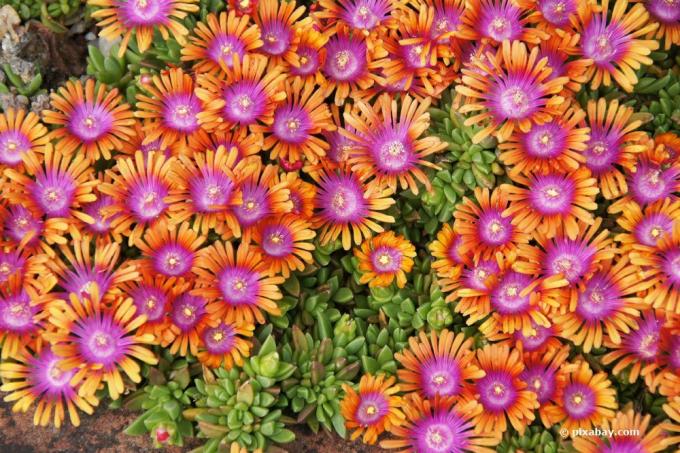
King agave
- botanical: Agave victoriae-reginae
- Location: sunny
- Place of growth: rock garden, bucket
- Winter hardiness: up to -5 ° C

Hot stonecrop
- botanical: Sedum acre
- Location: full sun
- Place of growth: dry stone walls, cracks in walls, gravel paths or gravel roofs
- Winter hardiness: down to -20 ° C
- hardy varieties: 'Yellow Queen', 'Hillbrandii', 'Leuchtfeuer'
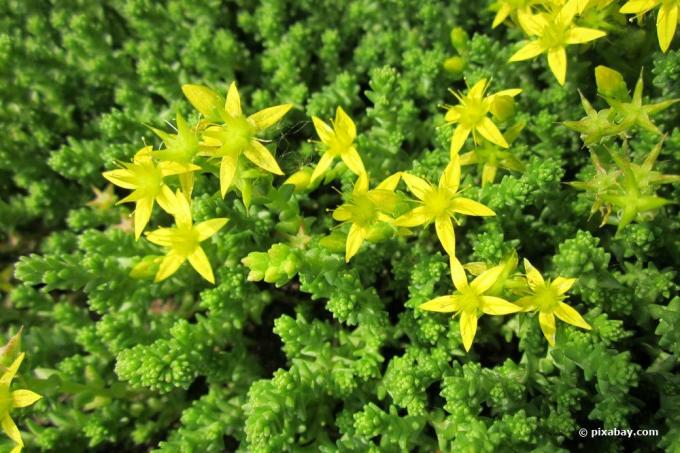
Cobweb houseleek
- botanical: Sempervivum arachnoideum
- Location: sunny
- Place of growth: on rubble slopes, rocks and rough meadows
- Winter hardiness: down to -20 ° C
Cacti
These exotic plants are suitable for locations that are too dry for other plants. Cacti convince with their aesthetic flowers in beds under the roof overhang or on the open space in the garden or on the garage roof. Cacti fit perfectly in matching containers made of terracotta or frost-proof balcony boxes. The biggest enemy of these plants is waterlogging.
Beehive cactus
- botanical: Escobaria vivipara
- Location: full sun
- Place of growth: mineral bed with clay content
- Winter hardiness: down to -20 ° C
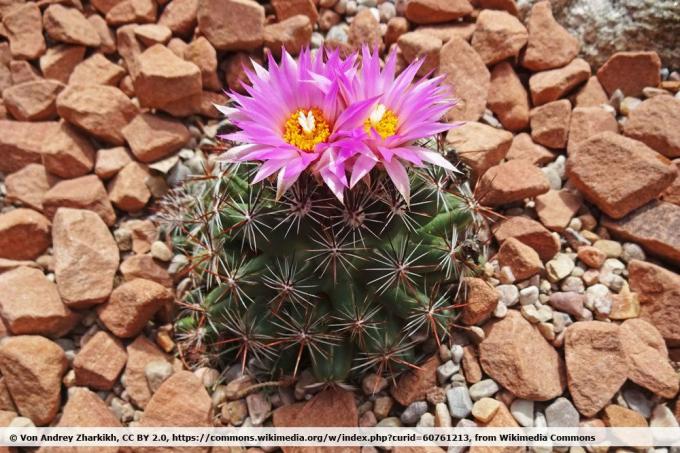
Hedgehog cactus
- botanical: Echinocereus coccineus
- Location: sunny
- Place of growth: rock garden, bucket
- Winter hardiness: down to -22 ° C
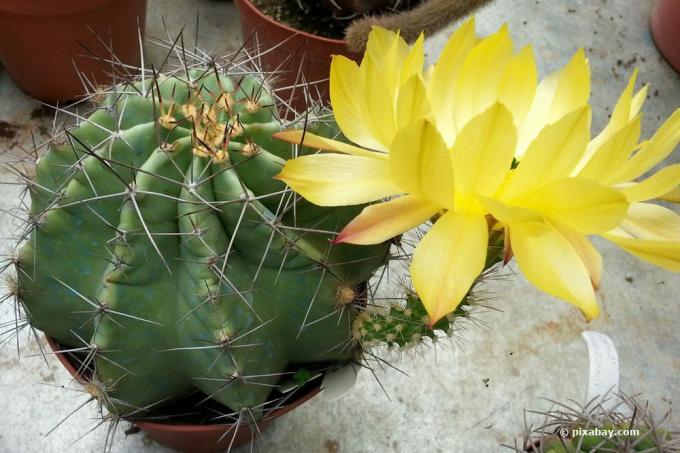
Black-brown-thorn prickly pear cactus
- botanical: Opuntia phaeacantha
- Location: sunny
- Place of growth: stone slopes facing south
- Winter hardiness: down to -22 ° C

Perennials- prickly pear
- botanical: Cylindropuntia imbricata
- Location: sunny
- Place of growth: gravel bed, bucket
- Winter hardiness: -20 ° C to -25 ° C
Calla
In contrast to the room calla, which is not winter hardy, there is a perennial and frost-resistant Zantedeschia. These hardy exotic species can withstand temperatures down to -20 ° C, but should be covered with dry leaves. The bulbs can be planted between spring and autumn and remain in the garden all year round.
Tip: If you want to be on the safe side, use the local Calla palustris. This thrives in the garden all year round and does not need winter protection.
Calla 'Crowsborough'
- botnaic: Zantedeschia aethiopica
- Location: sunny to partially shaded
- Place of growth: protected bed
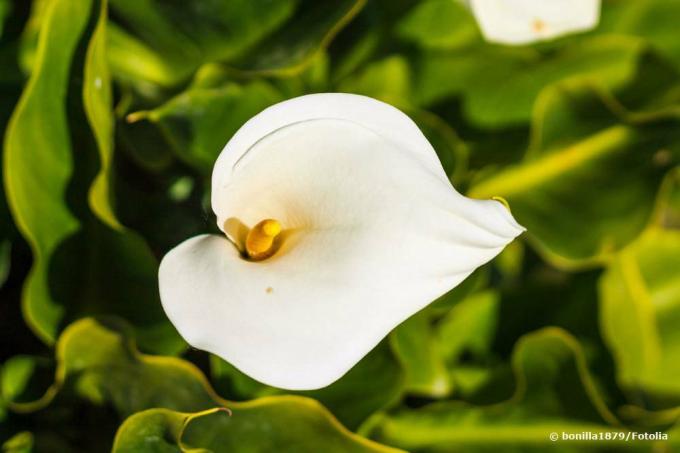
Dragon arum
- botanical: Calla palustris
- Location: sunny to partially shaded
- Place of growth: swamp bed, pond edge
- Winter hardiness: down to -34 ° C
Bananas
These perennials create an exotic atmosphere that is somewhat reminiscent of the tropics. Although most species come from frost-free regions, there are some hardy and unusual exotic species. You can cope with minus temperatures in the single digits. In the event of severe frosts, you should isolate the plants with winter protection.
Darjeeling banana
- botanical: Musa sikkimensis
- Location: sunny
- Place of growth: sheltered from the wind on a southern house wall
- Winter hardiness: up to -5 ° C
Japanese fiber banana
- botanical Musa basjoo
- Location: sunny
- Place of growth: sheltered from the wind on a southern house wall
- Winter hardiness: down to -15 ° C
Palm trees
These plants are typical of tropical climes, but some species defy Central European sub-zero temperatures and can be cultivated outdoors all year round. The following species are hardy down to -25 ° C with suitable winter protection. In the first few years, winter protection is recommended even when there is little frost.
Needle palm
- botanical: Rhapidophyllum hystrix
- Location: sunny
- Place of growth: rock garden, terrace, tub
- Winter hardiness: without winter protection down to -15 ° C

Palmetto palm
- botanical: Sabal palmetto
- Location: full sun
- Place of growth: rock garden, terrace, small specimens in the tub
- Winter hardiness: without winter protection down to -8 ° C
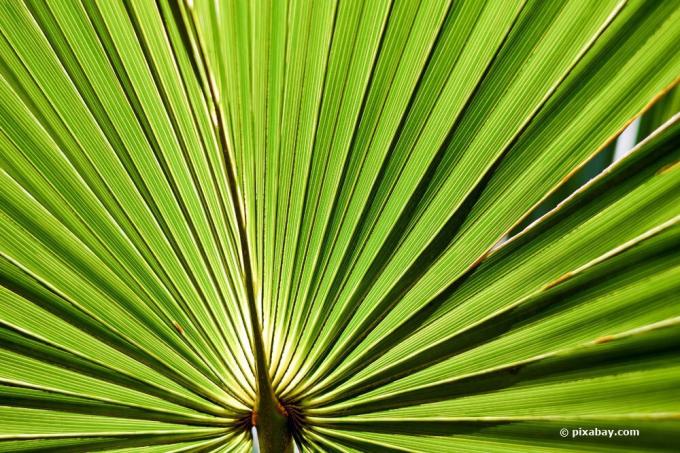
Wagner's Hemp palm
- botanical: Trachycarpus wagnerianus
- Location: sunny to partially shaded
- Place of growth: rock garden, terrace, tub
- Winter hardiness: without winter protection down to -12 ° C
Carnivores
There are some hardy exotic species among the carnivores. Because numerous carnivorous plants come from North America and withstand temperatures down to -30 ° C without any problems. Carnivores also grow outdoors in Central Europe. They retreat to the so-called hibernacles in autumn and then survive in the protective moss cover. Therefore, winter protection for the bog bed in the garden is recommended. Fir branches and leaves are ideal. Swamp primrose (Primula rosea) and bog orchid (Pogonia ophioglossoides), both of which are considered winter hardy, are suitable as plant partners.
Alpenfettkraut
- botanical: Pinguicula alpina
- Location: sunny to partially shaded
- Place of growth: calcareous beds with moist conditions

Filiform sundew
- botanical: Drosera filliformis
- Location: full sun
- Place of growth: bog bed

Horned bladderweed
- botanical: Utricularia cornuta
- Location: sunny
- Place of growth: in a moist sphagnum bed
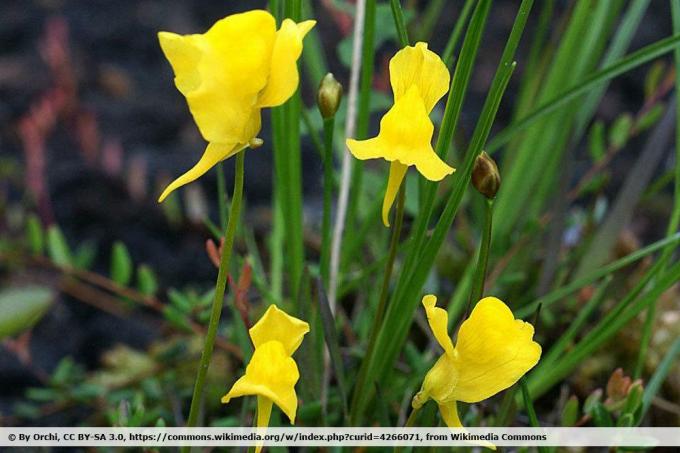
Red pitcher plant
- botanical: Sarracenia purpurea
- Location: sunny
- Place of growth: in a moist sphagnum bed





